New Names Can’t Erase Institutionalized Mistakes
The renaming of the Oriental Institute to the Institute for the Study of Ancient Cultures is a welcome change, but it can’t eradicate the former name’s pejorative, misleading connotations.
The doors to the Institute for the Study of Ancient Cultures (ISAC), formerly known as the Oriental Institute.
May 15, 2023
As museums around the country grapple with the very essence of what they are due to our country’s ongoing racial reckoning, many have uncovered dark histories of racism, colonialism, cultural appropriation, and outright theft from marginalized groups. The impact of such ills may never be quantified or erased, but the least that can be done is an effort to right past wrongs. Last month, the University renamed the former Oriental Institute (OI) as the Institute for the Study of Ancient Cultures, West Asia & North Africa (ISAC), putting to rest a name that perpetuated a deep and harmful representation of ancient history for more than a century. The Maroon Editorial Board wholly embraces the institute’s renaming and the comprehensive, input-driven process through which the institute settled on its new identity. But we also realize that new nomenclature is a cosmetic fix, not to mention a long overdue change. We hope ISAC seizes the opportunity brought about by its new identity to interrogate the implications of its imagery, investigate its internal contents, and identify gaps in the items on display.
ISAC was established in 1919 by James Henry Breasted, who attended the Chicago Theological Seminary before becoming a professor at the University in 1894. With the financial support of John D. Rockefeller Jr., Breasted sought to establish a research laboratory to serve as the world’s leading center that studied human progress spanning back to the ancient days of West Asia and North Africa through theoretical, methodological, and empirical perspectives. ISAC opened to the public in 1931 and currently features around 350,000 artifacts, mostly excavated by ISAC-affiliated archaeologists.
On April 4, the University formally announced the name change for the institution. Per the ISAC website, “ISAC’s goals have remained essentially unchanged: to document and study the languages, history and cultures of West Asia and North Africa.” In an interview with The Maroon, ISAC Communications Director Matthew Whelton explained that the name change will not alter ISAC’s purpose; it is primarily intended to clarify the museum’s scope.
“The word ‘oriental’ doesn’t [reflect] our collections or our work. When people hear the word ‘oriental,’ they think of East Asia, and our work doesn’t address East Asia at all. A big part of this was to combat this confusion,” Whelton said.
The Maroon Editorial Board applauds ISAC for making this step but thinks it remiss not to note that the change is long overdue.
Whelton explained, “We’re aware of the pejorative connotations of the word and thought it was a perfect time to change, both to bring awareness to what we do and to create a name that more effectively speaks to the cultures that we represent.”
It seems one can break down the reason for the renaming into two separate—albeit interrelated—ones: (a) the term “oriental,” which connotes East Asia, doesn’t accurately reflect the museum’s collection, and (b) the term “oriental” is intrinsically pejorative.
The University and ISAC have leaned heavily on the first reason in announcements concerning the change, but we contend that even if the museum did feature East Asian work, the term “oriental” would still need revising. It’s all well and good that “orient” derives from a Latin word that merely means “east”—antonymic to “occident”—but this doesn’t change the fact that the former is laden with connotative baggage. You can’t hear the word without thinking of incense, colorful rugs, and sepia-toned “foreign” scenes from action movies. “Oriental” takes half the totality of human experience and flattens it into the “vaguely foreign.” It’s a stereotype, an enemy of complexity, and the worst way to brand an institution that’s meant to encourage inquiry.
The museum’s new name, which specifically mentions “West Asia & North Africa,” is more geographically precise and better represents ISAC’s collections. But the persistent omission of other parts of the ancient world raises the question: What are the implications of a museum whose study of ancient cultures focuses on only two regions of the world? Is a narrative that excludes most of Asia and Africa, even unintentionally, contributing to the erasure or undermining of other cultures?
Perhaps it’s not surprising that an institution that has always struggled to reckon with its role in reinforcing structural racism on the South Side has also failed to grasp the significance of using a problematic misnomer for more than a century on the ivory tower it so cherishes. There’s an ironic contradiction in how the University touts its academic prowess while failing to question, for a century, the obvious historical inaccuracies in the nomenclature it uses.
If the phrase was already being phased out of common use in 2021, one must ask: How is now a “perfect time” to formalize the change? Put another way, the misleading description of “oriental” and its pejorative connotations far predate 2023, 2021, or any time in this millennium. Leveraging this term incorrectly inflicts twice the harm: It perpetuates exoticist stereotypes of those it purports to describe, and it spreads them onto other cultures. Renaming and specifying the remit of the institute can limit future misunderstandings, but it can’t erase the flawed foundation of a name reinforced through more than a century of institutional memory.
Implementing substantive change, whether through actions or institutional renaming, necessitates diverse leadership, which begins with the people the University chooses to advise these decisions. In 2021, the then Oriental Institute created a name-change committee of University constituents.
ISAC Interim Director Theo van den Hout described the committee as “probably the broadest the OI had ever seen, with no fewer than thirteen representatives from the OI, NELC, and Center for Middle Eastern Studies faculty; OI staff; OI advisory council members; and PhD students.”
While The Maroon Editorial Board recognizes the academic diversity amongst representatives, we want to acknowledge the lack of undergraduate students from this group, particularly those of Middle Eastern, North African, and West African heritage. Those who are descendants from the ancient civilizations studied at ISAC deserve to be a part of the naming conversation regardless of academic affiliation or previous affiliation with the institute itself.
Within the collections of West Asia and North Africa, discrepancies still exist with regards to what civilizations are represented. ISAC’s galleries represent Mesopotamia, Khorsabad, Assyria, Syro-Anatolia, Megiddo, Egypt, Persia, and the Nubian Desert. Evident is an exclusion of North African cultures, with Egypt and Nubia being the only such regions represented in the permanent galleries. Furthermore, Nubia is the only Black civilization of these cultures. As ISAC continues to further its scholarship, we hope to see increased efforts to expand the collections across North Africa, especially to cultures of the Upper Nile.
Additionally, how ISAC acquired its artifacts is imperative to highlight in this conversation. Currently, ISAC states on its website that it only considers artifacts that “can be shown to have left their country of origin before 1972.” This date coincides with the 1972 UNESCO Convention on the Means of Prohibiting and Preventing the Illicit Import, Export, and Transfer of Ownership of Cultural Property, which was enacted to combat illegal trade of different cultural items. These items can include scientific samples and/or “study collection materials.” Each item must be shown to have left its country of origin before 1972, as defined by the modern-day boundaries recognized by the United States government, to be accepted in the collection.
Though this policy is both legal and respectful of countries’ cultural rights, ISAC has had issues in the past pertaining to its artifacts, especially for items it already had in its possession. The institute claims that many of its 350,000 artifacts were excavated by ISAC-affiliated archaeologists. Yet, in 2018, The Maroon reported that the United States Supreme Court ruled in favor of the then-Oriental Institute, which prevented American survivors of a 1997 terror attack carried out by Hamas in Jerusalem, to claim the institute’s Iranian artifacts “as compensation from the Iranian government.”
Additionally, remnants of ISAC’s problematic past are conveyed in the mural above the museum’s front entrance. This mural, one of the first things visitors see when they enter, depicts a person from the United States shaking hands with a person from Ancient Egypt and is problematic for several reasons. Created in 1919, the mural conveys the zeitgeist of its time: an uptake in archeological interest in Egypt. Excavations in the 20th century led to vital discoveries, such as the 1922 discovery of the tomb of Pharaoh Tutankhamun, more commonly known as King Tut. To this day, it is the only tomb found in near-intact condition.
Even without this historical context in mind, ISAC’s mural is exclusionary and an illustration of the selective reporting of history. As a museum that claims to feature galleries devoted to Nubia, Persia, Mesopotamia, and Syria, this mural sends an immediate message to visitors that there is more of an emphasis placed on Egyptian history than the history of other ancient civilizations. This notion is supported by ISAC having around 386 Ancient Egyptian-language artifacts while other ancient languages have considerably fewer.
Finally, a mural of someone from the United States shaking hands with someone from Egypt is an image that perpetuates the very pejorative themes ISAC’s name change is trying to fight. One of the major issues with the term “oriental” is that it is inherently divisive and generalizing. It is a term that sets a massive number of cultures in Asia against the “civilization-bearing” people of the West.
The mural is indicative of those pejorative and misleading connotations that remain physically and intellectually attached to ISAC beyond the institution’s renaming. For ISAC to truly reflect the progress its new name is attempting to convey, it needs to incorporate substantive change in what it is displaying on the façade of its building and in its collections as well as reckon with how those items got there. Only then can ISAC, and this institution at large, truly begin to evaluate their roles in our country’s fight against incomplete, racist, and inaccurate histories.


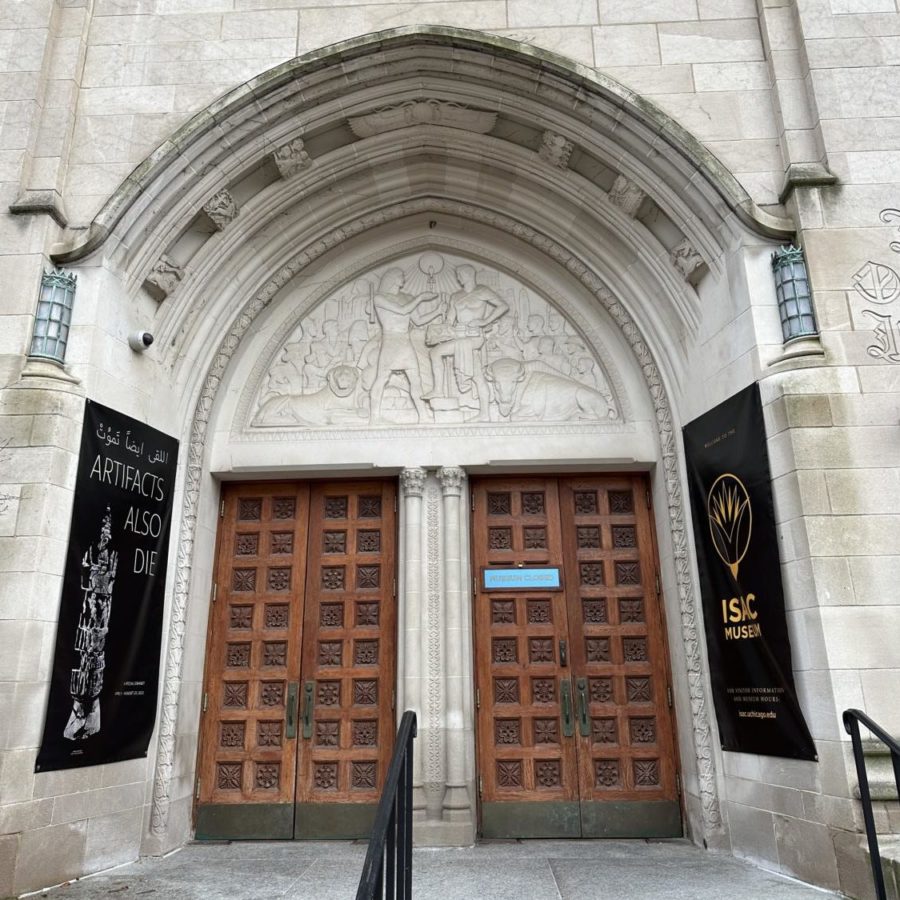
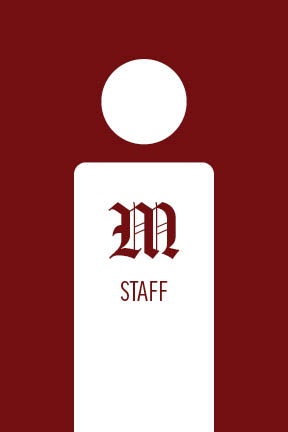
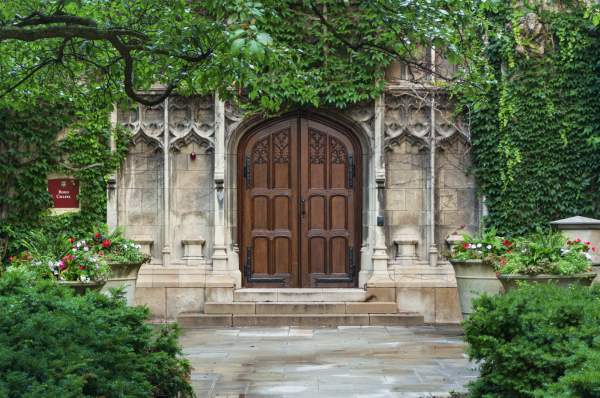

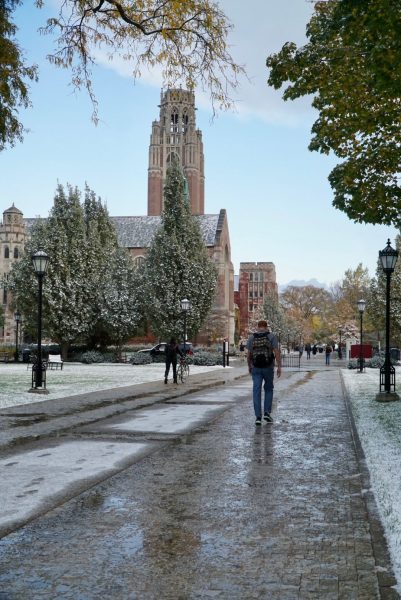
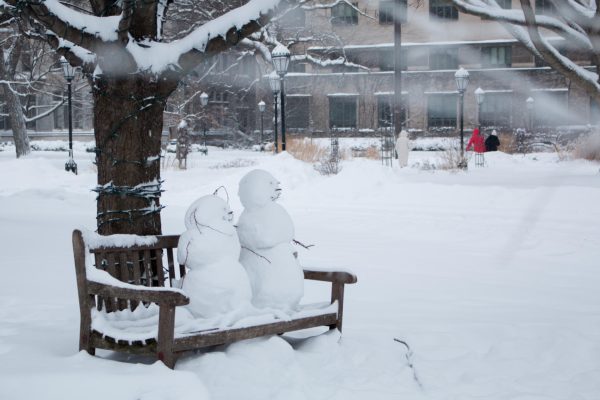
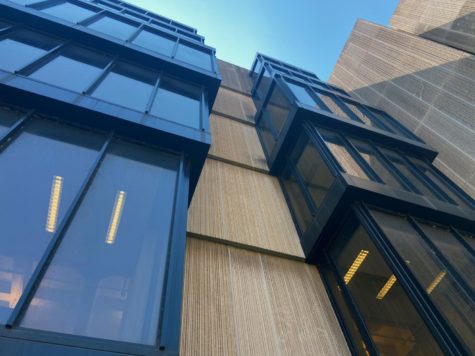
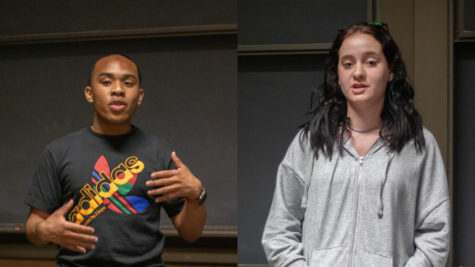

Tudḫaliya IV / Sep 26, 2023 at 6:31 pm
This editorial, while clearly well-intentioned, misses the mark in several respects. The editorial board mischaracterizes the manner in which ISAC staff presents the reasoning behind the name change: every press release I’ve yet encountered has acknowledged the pejorative nature of the word oriental.
The rhetorical questions targeting the scope of the Institute come across as being in bad faith. Does the editorial board expect every museum to be universal in scope (discounting, presumably, the opportunities for racism inherent in that enterprise) in order to avoid the erasure of other cultures? This implication discounts the valuable work that museums with specialized collections can do to represent and celebrate the cultures they represent, with a particular example outside the university being the Asian Art Museum in San Francisco.
The editorial board has also neglected to include in its analysis recent exhibitions at the Institute aimed squarely at the issues they target the Institute for ignoring. Works by Syrian artist Mohamad Hafez and Iraqi-American Michael Rakowitz have been scattered throughout the permanent collection, and engage in a dialogue with those ancient pieces that is immediately relevant to the issues of racism and colonialism that the editorial board professes to be interested in. Furthermore, a recent special exhibit has placed on display the Institute’s collection of roman sculpture, with the express intent of interrogating the collection practices of the Institute and the civic and academic thinking behind them.
Two final inaccurate statements from the piece: the Supreme Court case mentioned concerned the continued ability of the Institute to return tablets to Iran following a long loan. It bears stating outright: the Institute had a contract to excavate these tablets, investigate them, and then return them to the country of origin, which it honored. How this is a mark against the Institute, as the op-ed seems to view it, escapes me.
Finally, the tympanum carving does not depict a person from the US shaking hands with an Egyptian – it depicts an Egyptian holding his hands out to someone dressed as an ancient Greek. This does not make its subject matter any less dated, but accuracy in reporting matters. The artist, Ellerhusen, was a German immigrant who studied at the Art Institute and decorated many other significant buildings in the city and around the country – it therefore seems hasty to call for its removal when the artist is so important to the immigrant experience in the Midwest.